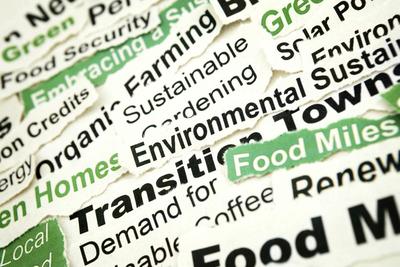How sustainable is your diet?
Sustainability in the food sector is often considered at factory level, including energy saving in processes, change in sourcing habits and reduction of waste in the supply chain. Focusing sustainability evaluations at product level allows organisations not only to link manufacturing, packaging and delivery but also to connect with consumer expectations through environmental nutrition and labelling.
In 2010, a study reported that 84% of consumers were actively looking for sustainability claims on food and drink. If this study were to be carried out in 2013, the percentage would probably be very similar if not higher. However, the number of different types of sustainability claims encountered on products has risen. Claims such as ‘environmentally friendly’ may be too generalised and difficult to verify during a shopping session. Cost, consumer safety, welfare and health are indubitably the most important aspects of a product for the majority of consumers and this will continue to increase. Linking nutritional benefits and environmental performance is now a reality and is expected to expand in the coming years under the name of ‘Nutritional Sustainability’.
Improving product sustainability
Quantifying the environmental impact of diet is still being debated and many options are available for consumers willing to remove meat from their menus for example. Between two dishes of lasagne or two caesar salads, the sustainable choice should lead to better health as well as reducing environmental impact. Recent developments in life-cycle assessment studies and nutritional analysis have opened new paths for mapping product sustainability.

For improved results, the following aspects should be considered as a baseline:
Environment
- Climate change impacts
- Soil and biodiversity impacts
- Rationalisation of natural resource usage
Health and welfare
- Nutritional balance
- Nutritional quality
- National nutrition initiatives
- Nutrient profiling initiatives
- Food safety
Data related to local schemes of supply, avoidance of unwanted impacts and the analysis of alternatives should be taken into account and discussed on a case-by-case basis. This in-depth analysis will also explore environmentally sustainable pathways to provide livelihoods for suppliers and food for consumers.
Such methods should be of interest not only to food manufacturers who want to increase the sustainability aspects of their products but also to catering companies and canteen managers, mindful of the footprint of their menu.
Communicate environmental performance: EPD and PCF
When a product or system has been developed and manufactured with sustainable considerations it might be relevant to communicate about its performance. This is what an Environmental Product Declaration (EPD) is made for. It is a standardised (ISO 14025/TR) LCA-based tool that provides a threefold benefit:
- Credibility: it is verified by a third party for public communication.
- Comparability: products from the same category will share a single calculation methodology.
- Objectivity: calculation of environmental performance is based on LCA methodology.
A product carbon footprint (PCF) mark is sometimes the first step in developing a product-orientated sustainability strategy for a company. This can help an organisation comply with carbon emission regulations, inspire trust in the business and develop client confidence in the products.
Social responsibility and an interest in how a business impacts its employees, customers and the communities in which it operates should not be underestimated.
Oracle assists major distributor in clean energy transition
Essential Energy, an electricity distributor in Australia, is said to have modernised its...
Unlocking rooftops: a 'game changer' for renewable energy
According to Partners in Performance, a major barrier to renewable energy expansion in Australia...
Can we really 'electrify everything'?
Energy experts have debated the practicality of achieving full electrification on a global or...










